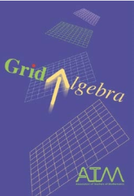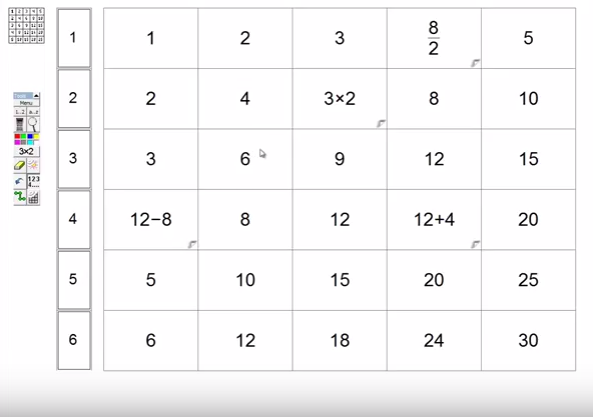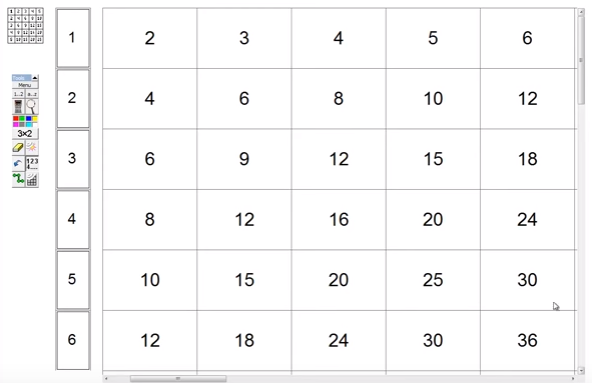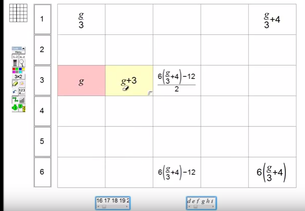Helen Hindle - @helenhindle1
My rationale for choosing to work with mixed-attainment groups
The reason I feel so strongly about the importance of teaching mathematics in mixed attainment classes is because in the schools that I have worked in which did set, Pupil Premium students were disproportionately represented in the lower sets. The Social Mobility Commission report suggests that this isn’t unique to those schools, they found that ‘children from low Socio-Economic Status backgrounds…are more likely to be placed in low ability groups.’ (Shaw, Menzies, Bernades and Baars, 2016, Page 37). They go on to describe the profound negative impact that this can have on pupils’ future social mobility.
Equality of opportunity and achievement
If schools use examination and assessment results to group pupils then it is possible to see why pupils from low Socio-Economic Status backgrounds often end up in the lower sets. One of the conclusions from the Social Mobility Commission report is that, ‘Overall, family influences such as parental engagement with education and expectations have a strong effect on the educational attainment of children.’ (Shaw, Menzies, Bernades and Baars, 2016, Page 36). Parents who place a high importance on academic achievement are more likely to check that their children are completing homework, help with homework tasks, encourage their child to attend revision lessons and may even pay for private tuition. The report found that ‘Low Socio-Economic Status White British families tend to be less engaged in their children’s education …and this may play a role in explaining attainment gaps.’ (Shaw, Menzies, Bernades and Baars, 2016, Page 36.)
The dangers of limiting pupils’ achievements
Once pupils have been placed in a ‘set’ this sends messages to both pupils and teachers about what these pupils are capable of achieving. Pupils too often develop a fixed mindset about their mathematical ability, assuming that they are “rubbish” at maths and that there is no point in trying as they are only going to fail anyway. Hattie describes how students assessed as lower-attainment often ‘underestimate their achievement and, over time, they come to believe their lower estimates and lose the confidence to take on more challenging tasks.’ (Hattie, 2012, page 79). While research carried out by the Education Endowment Foundation states that ‘It appears likely that routine setting or streaming arrangements undermine low attainers’ confidence and discourage the belief that attainment can be improved through effort.’ (Education Endowment Foundation, 2017, Page 2).
Teachers often follow different schemes of work for lower attainment groups, thereby limiting the learning opportunities for these pupils. Research carried out by Wiliam, and Bartholomew revealed that ‘..teachers teaching bottom sets…had lower expectations of their students, frequently set work that was undemanding…used a narrower range of teaching approaches and hardly ever responded to students’ frequent requests for more demanding work…’ (Wiliam and Bartholomew, 2001, Page 7). It is therefore not surprising that once placed in a lower ability group pupils continue to fall further and further behind. Research conducted by Francis and Wong revealed that pupils placed in lower ability sets rapidly ‘begin to construct themselves as ‘not much good’ and ‘not academic’, with implications for their future learning, aspirations, and classroom behaviours.’ (Francis and Wong, 2013, Page 5.) These implications mean that once a pupil is allocated to a lower attainment group they are unlikely to move out of it.
Problems of disaffection and self-confidence
The issues with setting are not restricted to pupils in lower attainment groups. Nardi and Steward argued that there exists ‘a large group of learners who are ‘quietly disaffected’ and whose mathematical potential has yet to be fulfilled.’ (Nardi and Steward, 2005, Page 1). They conducted research into the attitudes of year 9 pupils in ‘middle sets’ and concluded that these ‘quietly disaffected’ pupils, ‘seemed to perceive mathematics as a demanding subject, in which only exceptionally intelligent people can actually succeed. Lack of success in mathematics tended to be interpreted by the students as being due to lack of intelligence on their part, which led to overwhelmingly negative feelings about their own mathematical ability.’ (Nardi and Steward, 2005, Page 4). Research carried out by Boaler, Wiliam and Brown revealed that setting can also have a negative effective on the way that pupils in higher attainment classes perceive maths and their experiences of learning mathematics. ‘Approximately one-third of the students taught in the highest ability groups were disadvantaged by their placement in these groups because of high expectations, fast-paced lessons and pressure to succeed. This particularly affected the most able girls.’ (Boaler, Wiliam and Brown, Page 6, 2000).
Problems of labelling and associated language
When working in schools that set I was dismayed to hear the language associated with setting from both teachers and pupils. Higher attainment classes were frequently described as ‘top sets’ while lower attaining classes were described as ‘bottom sets.’ The language of ‘top’ and ‘bottom’ sends messages about the desirability or undesirability of sets. I’ve heard teachers telling poorly behaved students that they ‘don’t deserve to be in the top set’ and unless their behaviour improves they will be ‘moved down’ a set. Poorly behaved students often do underachieve in terms of attainment because their behaviour had prevented them from learning successfully in their lessons. Too often these pupils do move down the sets once their attainment results show that they aren’t ‘top set’ material. I have also heard teachers deciding what certain sets are going to be capable of achieving before having even met the students in those classes. For example, I remember one teacher coming to me with his new timetable after seeing that he had a year 11 class, set 4 of 5, to tell me that he couldn’t be expected to get any C grades out of that class. At the time, he hadn’t even seen his class list, all he knew about the class was the set number.
Impacts of teaching mixed-attainment groups
When I have led departments in which practice has moved from setting to mixed attainment it has had the following impact:-
Developing my practice
Teaching is complex whichever way pupils are grouped. However, I firmly believe that working with mixed attainment classes made me change my practice. There is a myth that teaching mixed attainment classes is harder, a myth which I believed in until attending Jeremy Hodgen’s workshop at the first Mixed Attainment Maths conference. Jeremy pointed out that there are lots of countries in which setting in mathematics is not typical and that when these teachers move to England and are asked to teach sets they find this difficult because it is different to what they are used to. Teaching mixed attainment classes is for many teachers in England, different to what they are used to and therefore seems difficult. This is why I believe it is so important to build a community of mixed attainment maths teachers who are happy to share their experiences and ideas and to support one another to develop their practice of teaching mixed attainment classes.
References
Ethnicity, Gender and Social Mobility
28th December 2016
Social Mobility Commission - Shaw, Menzies, Bernades and Baars,
It’s not which school but which set you’re in that matters: the influence of ability-grouping practices on student progress in mathematics.
2001
Dylan Wiliam & Hannah Bartholomew
Teaching and Learning Toolkit - Setting or Streaming
2017
Education Endowment Foundation
Visible Learning for Teachers - Maximizing impact on learning
2012
John Hattie
What is preventing social mobility?
A review of the evidence
March 2013
Professor Becky Francis and Dr Billy Wong
Attitude and Achievement of the Disengaged Pupil in the mathematics Classroom (Updated)
March 2005
Nardi, E. and Steward, S.
Students’ experiences of ability grouping— disaffection, polarisation and the construction of failure
2000
Jo Boaler, Dylan Wiliam and Margaret Brown
The reason I feel so strongly about the importance of teaching mathematics in mixed attainment classes is because in the schools that I have worked in which did set, Pupil Premium students were disproportionately represented in the lower sets. The Social Mobility Commission report suggests that this isn’t unique to those schools, they found that ‘children from low Socio-Economic Status backgrounds…are more likely to be placed in low ability groups.’ (Shaw, Menzies, Bernades and Baars, 2016, Page 37). They go on to describe the profound negative impact that this can have on pupils’ future social mobility.
Equality of opportunity and achievement
If schools use examination and assessment results to group pupils then it is possible to see why pupils from low Socio-Economic Status backgrounds often end up in the lower sets. One of the conclusions from the Social Mobility Commission report is that, ‘Overall, family influences such as parental engagement with education and expectations have a strong effect on the educational attainment of children.’ (Shaw, Menzies, Bernades and Baars, 2016, Page 36). Parents who place a high importance on academic achievement are more likely to check that their children are completing homework, help with homework tasks, encourage their child to attend revision lessons and may even pay for private tuition. The report found that ‘Low Socio-Economic Status White British families tend to be less engaged in their children’s education …and this may play a role in explaining attainment gaps.’ (Shaw, Menzies, Bernades and Baars, 2016, Page 36.)
The dangers of limiting pupils’ achievements
Once pupils have been placed in a ‘set’ this sends messages to both pupils and teachers about what these pupils are capable of achieving. Pupils too often develop a fixed mindset about their mathematical ability, assuming that they are “rubbish” at maths and that there is no point in trying as they are only going to fail anyway. Hattie describes how students assessed as lower-attainment often ‘underestimate their achievement and, over time, they come to believe their lower estimates and lose the confidence to take on more challenging tasks.’ (Hattie, 2012, page 79). While research carried out by the Education Endowment Foundation states that ‘It appears likely that routine setting or streaming arrangements undermine low attainers’ confidence and discourage the belief that attainment can be improved through effort.’ (Education Endowment Foundation, 2017, Page 2).
Teachers often follow different schemes of work for lower attainment groups, thereby limiting the learning opportunities for these pupils. Research carried out by Wiliam, and Bartholomew revealed that ‘..teachers teaching bottom sets…had lower expectations of their students, frequently set work that was undemanding…used a narrower range of teaching approaches and hardly ever responded to students’ frequent requests for more demanding work…’ (Wiliam and Bartholomew, 2001, Page 7). It is therefore not surprising that once placed in a lower ability group pupils continue to fall further and further behind. Research conducted by Francis and Wong revealed that pupils placed in lower ability sets rapidly ‘begin to construct themselves as ‘not much good’ and ‘not academic’, with implications for their future learning, aspirations, and classroom behaviours.’ (Francis and Wong, 2013, Page 5.) These implications mean that once a pupil is allocated to a lower attainment group they are unlikely to move out of it.
Problems of disaffection and self-confidence
The issues with setting are not restricted to pupils in lower attainment groups. Nardi and Steward argued that there exists ‘a large group of learners who are ‘quietly disaffected’ and whose mathematical potential has yet to be fulfilled.’ (Nardi and Steward, 2005, Page 1). They conducted research into the attitudes of year 9 pupils in ‘middle sets’ and concluded that these ‘quietly disaffected’ pupils, ‘seemed to perceive mathematics as a demanding subject, in which only exceptionally intelligent people can actually succeed. Lack of success in mathematics tended to be interpreted by the students as being due to lack of intelligence on their part, which led to overwhelmingly negative feelings about their own mathematical ability.’ (Nardi and Steward, 2005, Page 4). Research carried out by Boaler, Wiliam and Brown revealed that setting can also have a negative effective on the way that pupils in higher attainment classes perceive maths and their experiences of learning mathematics. ‘Approximately one-third of the students taught in the highest ability groups were disadvantaged by their placement in these groups because of high expectations, fast-paced lessons and pressure to succeed. This particularly affected the most able girls.’ (Boaler, Wiliam and Brown, Page 6, 2000).
Problems of labelling and associated language
When working in schools that set I was dismayed to hear the language associated with setting from both teachers and pupils. Higher attainment classes were frequently described as ‘top sets’ while lower attaining classes were described as ‘bottom sets.’ The language of ‘top’ and ‘bottom’ sends messages about the desirability or undesirability of sets. I’ve heard teachers telling poorly behaved students that they ‘don’t deserve to be in the top set’ and unless their behaviour improves they will be ‘moved down’ a set. Poorly behaved students often do underachieve in terms of attainment because their behaviour had prevented them from learning successfully in their lessons. Too often these pupils do move down the sets once their attainment results show that they aren’t ‘top set’ material. I have also heard teachers deciding what certain sets are going to be capable of achieving before having even met the students in those classes. For example, I remember one teacher coming to me with his new timetable after seeing that he had a year 11 class, set 4 of 5, to tell me that he couldn’t be expected to get any C grades out of that class. At the time, he hadn’t even seen his class list, all he knew about the class was the set number.
Impacts of teaching mixed-attainment groups
When I have led departments in which practice has moved from setting to mixed attainment it has had the following impact:-
- Pupils and teachers developed growth mindsets
- Pupil collaboration became embedded
- Pupils were more active in their learning
- Student voice revealed that pupils' attitudes towards mathematics were much more positive
- There was far greater collaborative planning and sharing of pedagogy across the department, which lead to greater cohesion across the department
- There was a clear vision and ethos in Maths which both pupils and teachers could articulate
- Teachers' expectations of behaviour and attainment were raised
- There was far greater differentiation evident in the planning and delivery of lessons
- There was a wider range of types of activities evident in the planning and delivery of lessons
- There was a significant improvement in the % of pupils achieving or exceeding their monitoring grades in all classes and year groups
- Behaviour across the department dramatically improved, with a greatly reduced number of incidences of pupils being removed from the classroom and 'Attitude to Learning' scores improved across all classes and year groups
- Pupils' own expectations of behaviour and attainment were raised.
Developing my practice
Teaching is complex whichever way pupils are grouped. However, I firmly believe that working with mixed attainment classes made me change my practice. There is a myth that teaching mixed attainment classes is harder, a myth which I believed in until attending Jeremy Hodgen’s workshop at the first Mixed Attainment Maths conference. Jeremy pointed out that there are lots of countries in which setting in mathematics is not typical and that when these teachers move to England and are asked to teach sets they find this difficult because it is different to what they are used to. Teaching mixed attainment classes is for many teachers in England, different to what they are used to and therefore seems difficult. This is why I believe it is so important to build a community of mixed attainment maths teachers who are happy to share their experiences and ideas and to support one another to develop their practice of teaching mixed attainment classes.
References
Ethnicity, Gender and Social Mobility
28th December 2016
Social Mobility Commission - Shaw, Menzies, Bernades and Baars,
It’s not which school but which set you’re in that matters: the influence of ability-grouping practices on student progress in mathematics.
2001
Dylan Wiliam & Hannah Bartholomew
Teaching and Learning Toolkit - Setting or Streaming
2017
Education Endowment Foundation
Visible Learning for Teachers - Maximizing impact on learning
2012
John Hattie
What is preventing social mobility?
A review of the evidence
March 2013
Professor Becky Francis and Dr Billy Wong
Attitude and Achievement of the Disengaged Pupil in the mathematics Classroom (Updated)
March 2005
Nardi, E. and Steward, S.
Students’ experiences of ability grouping— disaffection, polarisation and the construction of failure
2000
Jo Boaler, Dylan Wiliam and Margaret Brown




 RSS Feed
RSS Feed
